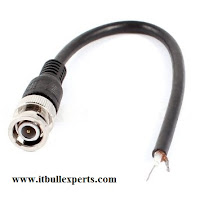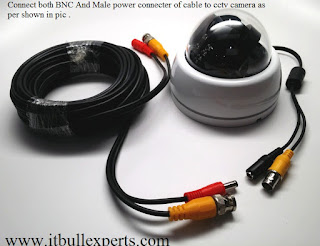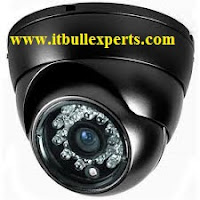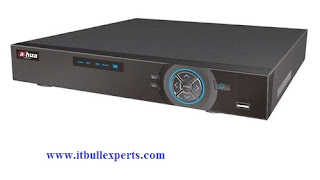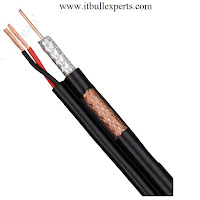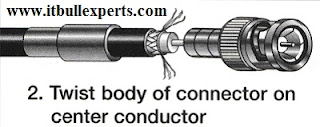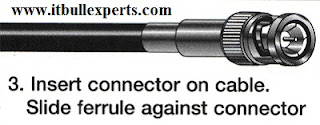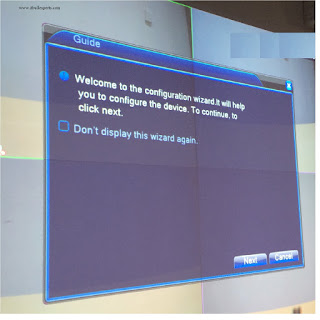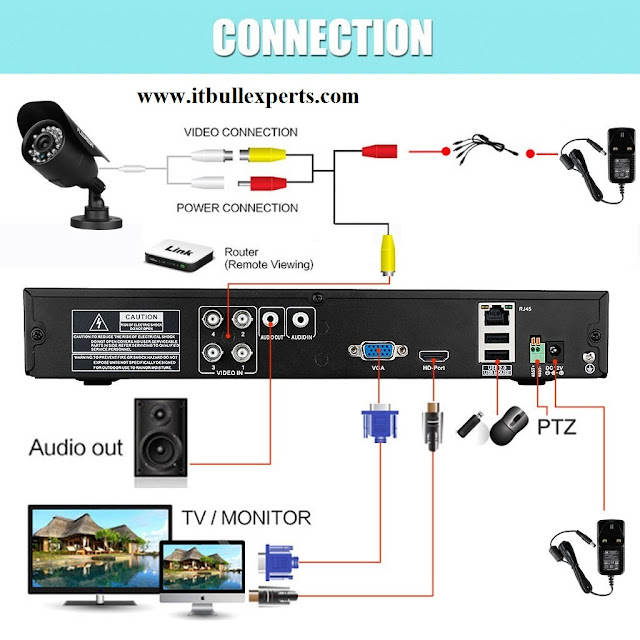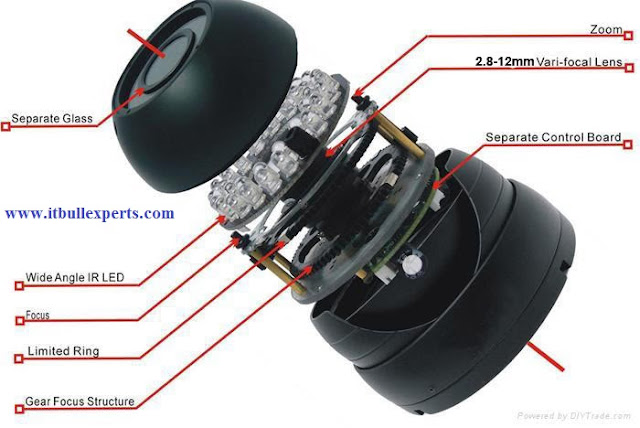Closed-circuit television (CCTV) cameras can produce images or recordings for surveillance[1] purposes, and can be either video cameras, or digital stills cameras. Marie Van Brittan Brown was the inventor of the CCTV camera.
:- How to install cctv camera with dvr & laptop .
:- Type of cctv camera & dvr & Cables .
CCTV is commonly used for a variety of purposes, including:
- Maintaining perimeter security in medium- to high-secure areas and installations.
- Observing behavior of incarcerated inmates and potentially dangerous patients in medical facilities.
- Traffic monitoring.
- Overseeing locations that would be hazardous to a human, for example, highly radioactive or toxic industrial environments.
- Building and grounds security.
- Obtaining a visual record of activities in situations where it is necessary to maintain proper security or access controls (for example, in a diamond cutting or sorting operation; in banks, casinos, or airports).

There are two type's of CCTV Cameras .
1:- Analogue Camera:-
 Can record straight to a video tape recorder which are able to record analogue signals as pictures. If the analogue signals are recorded to tape, then the tape must run at a very slow speed in order to operate continuously. This is because in order to allow a three-hour tape to run for 24 hours, it must be set to run on a time lapse basis which is usually about four frames a second. In one second, the camera scene can change dramatically. A person for example can have walked a distance of 1 meter, and therefore if the distance is divided into four parts, i.e. four frames or "snapshots" in time, then each frame invariably looks like a blur, unless the subject keeps relatively still.
Can record straight to a video tape recorder which are able to record analogue signals as pictures. If the analogue signals are recorded to tape, then the tape must run at a very slow speed in order to operate continuously. This is because in order to allow a three-hour tape to run for 24 hours, it must be set to run on a time lapse basis which is usually about four frames a second. In one second, the camera scene can change dramatically. A person for example can have walked a distance of 1 meter, and therefore if the distance is divided into four parts, i.e. four frames or "snapshots" in time, then each frame invariably looks like a blur, unless the subject keeps relatively still.
2:- Digital Camera :-
These cameras do not require a video capture card because they work using a digital signal which can be saved directly to a computer.
These can be share on LAN or WAN .
Now the one more camera also available in market .
That is :-
3:- Network Camera :-
IP cameras or network cameras are analogue or digital video cameras, plus an embedded video server having an IP address, capable of streaming the video (and sometimes, even audio).
Wired Vs. Wireless Connection
There are two main types of connections for CCTV cameras: a fixed cable or a wireless connection.
Fixed Cable Connection
Fixed cable connection means that the camera is physically connected to the monitor or recording device via a cable. Coaxial cables that are similar to normal home TV cables are usually used. Lengths come in 25, 35, 50, 100, or 500 feet. As the distance increases, signal quality decreases. For distances longer than 100 or 200 feet, purchase higher quality coaxial cables such as RG59 coaxial cable for distances up to 600 feet and for distances more than 600 feet, but less than 2,000 feet, purchase CAT5 cable.
Wireless Connection
Most wireless CCTV cameras use the 2.4 Gigahertz frequencies to transmit their video images to a monitor or DVR (digital video recorder). Usually, frequencies can be slightly changed to have more than one group of cameras in a specific space. Wireless CCTV cameras that use this frequency can easily transmit through most walls and obstacles. However, each individual location will have its own operating limits. Expect most wireless CCTV cameras to send data to a range of about 200 feet. However, many will more likely work well when transmitting less than 150 feet. A clear line of sight transmission will always work best.
Obviously a wireless connection allows greater freedom to place CCTV cameras almost anywhere. While wireless CCTV cameras transmit their video images to a digital video recorder or monitor, many of these types of cameras must be plugged into an electrical outlet. There are, however, some CCTV cameras that are battery operated.
What is the use of Balun .
Use of video balun
Balun is the abbreviation of balance+unbalance. A video balun is an one of important accessories that converts between a balanced signal and an unbalanced signal.
The reason why use video baluns? Video baluns, also known as CAT5 baluns, enable security installers to utilize CAT5 cable running video (and optionally power) for CCTV video cameras. A video balun is positioned on both ends of the CAT5 cable run and uses one of the the twisted pairs from the CAT5 cable to transfer the video from the camera to a DVR or monitor. There are also multi-camera baluns that could use the four twisted pairs in CAT5 to transfer the video for up to 4 cameras. The majority of security camera installers are familiar with using RG59 Siamese coax cable for CCTV, as this is actually the industry standard cable and also permits installers to run both the video from the camera and power to the camera by using a single cable run. There are versions of video baluns that also support running power to CCTV video cameras in addition to the video. These are some of the most common reasons that a security installer would choose to use CAT-5 cable rather than RG59 for a CCTV application.
Majority of locations has CAT5 cable pre-run for network infrastructure and installer can use existing cable network.
Solving the short range maximum video transmission distance via RG59 (coaxial cable), It can offer much more long range distance for video transmission, exceeds 700ft.
Cost-effective solution, and RG59 coaxial cable is more expensive than Cat5 cable
Video Balun Connectors
Active Video Balun
Active video baluns include a power supply and function also as an amplifier so that cable distances can be increased beyond 1200 ft (the limit for passive baluns). An active balun receiver can be utilized on the DVR or monitor end of the cable with a passive balun on the video camera end to enhance maximum effective distance to 2000 feet. When an active transmitter balun and active receiver balun are utilized with each other, the effective range of the cable will increase to 4000 ft for color cameras and also 5000 feet for monochrome. The below diagram illustrates the wiring used when installing active video baluns. Please note that power is needed for both the transmitting and receiving unit.
Passive video baluns
Passive video baluns are not powered and support cable distances up to 1200 ft. These baluns use only one of the twisted pairs in the Cat5 cable. The CAT5 is attached to the baluns on each end using screw terminals or some other connection types. The balun has a BNC connector that gets linked to the video camera on one end and a DVR or monitor on the other. Please see the below wiring diagram, which illustrates this.
Video baluns with power
Video baluns with power support running low voltage power to CCTV video cameras along with transferring the video signal. For baluns which also supply power to video cameras, one of the twisted pairs from the CAT5 cable is used for video and 2 pairs are used for power. Installers attach one pair for the positive and one pair for the negative power leads. Additionally, there are video + power baluns that implement RJ-45 connectors instead of the cable terminals, and even several versions which support audio too. Some installers prefer this, especially when using pre-made network cables with the RJ-45 ends already attached. An essential note is that the distance that power is not able to be run is much less than video and is still restricted to the voltage and also guage of cable being used. 12V DC usually begins to drop after 200 feet. The below video demonstrates how to use passive video baluns with power.
Multi-camera baluns
Multi-camera video baluns can work with several cameras and it allows each twisted pair of a Cat5 to be used for one camera, effectively allowing users to run video for up to four cctv cameras over a single Cat5 cable. Check below diagram and it illustrates how multiple camera video balun is wired.

